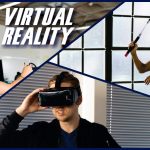The Rise of Virtual Reality: Applications and Challenges
Introduction:
In recent years, virtual reality (VR) has rapidly gained momentum, revolutionizing the way we interact with technology. This immersive experience has found applications in various sectors, from entertainment to education and healthcare. However, the widespread adoption of VR also poses certain challenges that need to be addressed to fully harness its potential.
Applications of Virtual Reality:
- Entertainment: Virtual reality has transformed the gaming industry, providing users with an unparalleled immersive gaming experience. VR technology has enabled gamers to enter simulated environments, blurring the lines between reality and the digital realm.
- Training and Simulation: Various industries, including aviation, military, and healthcare, have embraced VR for training purposes. Simulated environments allow trainees to practice in a risk-free setting, enhancing their skills and preparedness for real-world scenarios.
- Education: Virtual reality has the potential to revolutionize education by creating interactive and engaging learning experiences. Students can explore historical landmarks, dive into the depths of the ocean, or travel to outer space, making learning more immersive and captivating.
- Healthcare: VR is increasingly being used in healthcare for pain management, exposure therapy, and surgical simulations. It has proven effective in reducing pain and anxiety in patients, as well as aiding in the training of medical professionals for complex procedures.
- Architecture and Design: VR technology has transformed the way architects and designers visualize and present their projects. Clients can now experience virtual walkthroughs of buildings, enabling them to make informed decisions and providing a better understanding of the final design.
Challenges in Implementing Virtual Reality:
- Cost: High costs associated with VR hardware and software pose a barrier to its widespread adoption, limiting access to the technology for many individuals and businesses.
- Health Concerns: Prolonged exposure to VR can lead to side effects such as motion sickness, eye strain, and disorientation, raising concerns about its long-term effects on users’ health.
- Content Development: Creating high-quality VR content requires specialized skills and resources, making it challenging for content creators to meet the growing demand for immersive experiences.
- Technical Limitations: Despite significant advancements, VR technology still faces limitations in achieving realistic graphics, seamless motion tracking, and reducing latency, which can affect the overall user experience.
- Ethical and Social Implications: The immersive nature of VR raises ethical concerns related to privacy, data security, and the blurring of lines between the virtual and real world, necessitating the establishment of clear guidelines and regulations.
Conclusion:
Virtual reality has emerged as a groundbreaking technology with diverse applications across various industries. While its rise has opened up new possibilities for innovation and engagement, addressing the associated challenges is crucial for ensuring its sustainable and responsible integration into our daily lives.



